The Birth of Baby Dragons
A One-of-a-kind Miracle
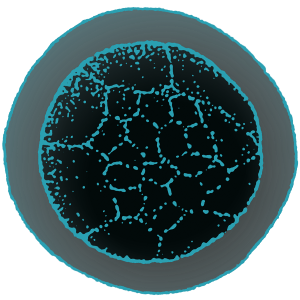
The egg cell divides. A morula from a small cluster of cells.
DAY 4
A Miracle
All of a sudden we catch sight of it. A tiny, fragile and beautiful creature. An actual olm egg can be seen on a stone, swaying to the slow rhythm of the current. This is giving us goose bumps and all kinds of feelings. Fear. Adrenaline. Excitement. Is this really happening? In an instant, we realise that Mother Nature has given us a great honour. And an even greater responsibility to bear. Our female olm is about to become a mom and we are the sole guardians of a happy little family of baby dragons.
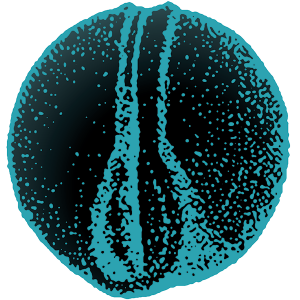
Neurula – the first rudiment of the brain and the spinal cord is formed.
DAY 30
Inseparable
This is a love story hidden from the public eye, as it takes place in the eternal darkness of the inaccessible subterranean world. A story full of mysteries that keeps intriguing scientists even after several centuries of research. In 2016, however, one of Postojna Cave’s olms decided to reveal its secrets for everyone to see right here, in our aquarium. Together we were discovering something that had never before been witnessed in nature – the development of olms’ offspring.
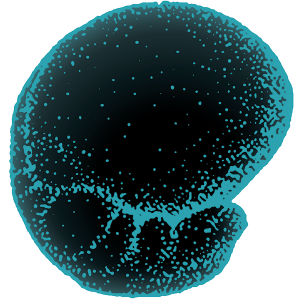
The head and the body are being formed, the yolk is stored in the belly.
DAY 50
The Guardians
We were faced with a gigantic challenge and couldn’t afford to make any mistakes. Filled with so much adrenaline, we turned into a well-tuned team with a one-of-a-kind mission. All of us breathed as one, learning and sweating all along. The scene that the most prominent biologists had been dreaming about was now unfolding before our very eyes. We had one another, a lot of trust and an even greater aim to work towards. Our mission was to create an environment that was as safe as possible for the olm mom and her precious eggs.
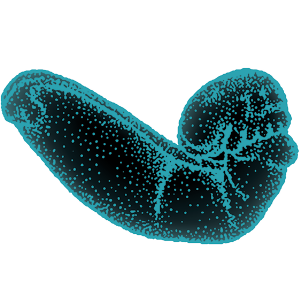
Strong fetal movement has been detected. The front leg rudiments are noticeable.
DAY 80
The S Dance
Unperturbed by the all this pomp, the baby dragon embryos are happily ‘dancing’ inside their egg jelly coats. At 2.5 months old, they are now already well over halfway through their development. They will keep entertaining the visitors for a little while longer, before they have to be moved to an aquarium that’s a bit more secluded. The tension is rising. Our hands are shaking a bit. We are filled with excitement.
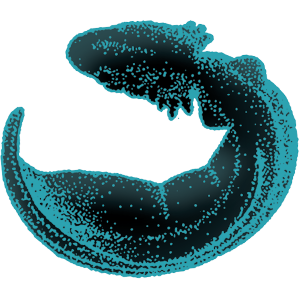
The body is becoming larva-like. Gill rudiments can be seen.
DAY 100
Celebrities
The news about the baby dragons from Slovenia spread in no time. Even the world’s most famous media outlets were eager to document our underground miracle. We received visits from the National Geographic team, the BBC as well as the Discovery Channel. We became a global
The embryo hatches from the egg jelly coat that protected it from the outside world.
DAY 124
The Big Day
After four months, the first baby dragon makes it out to the excitement of the public. When the last two baby olms – nicknamed Jojo and Laggard – hatch, there are as many as 21 olm siblings from the first olm brood.
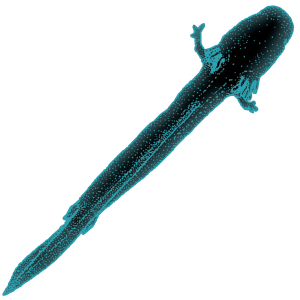
The baby olms are about 2.5 cm long. The digits on their front legs are now already noticeable.
DAY 168
Playful
The baby dragons are growing to our great delight. They keep feeding on the yolk in their bellies for another month or so, and then it’s time for the first family feast. We are excited to watch how hungry and eager they are to eat the tasty worms. This means that they are strong, healthy and happy.
Eight months after birth, the juvenile olms are 5 cm long.
DAY 256
Growing Up
Baby olms have tiny eyes and coloured skin. Adult olms, however, have less skin pigment and their eyes are atrophied and covered with skin. Instead they have special skin receptors that help them ‘see’ and detect their prey. They move with the help of legs. The front pair of legs has three digits each, and the rear one has two. Female olms do not become sexually mature until they are 14 years old.
Four years after they hatched, the baby olms are 14 cm long.
DAY 1496
Independent
It’s time to move out. The baby olms are now four years old and look almost fully grown. They are perfectly capable of living on their own. Our biologists slowly move one by one to the aquarium, where you can also see our youngest cave dwellers. The olms’ habitat is the wonderful subterranean world of the river Pivka, one of the most breathtaking underground rivers in Europe.
Superheroes
Olms have some amazing superpowers. They can live up to 100 years and can survive without food for several years. Their regeneration ability is equally as enviable. What makes the olms such superheroes is their eternal youth; in fact, despite the great age they reach, their development stops at the larval stage. Back in the 17th century, the inhabitants of Postojna believed that the cave was inhabited by a fearsome dragon and that olms were baby dragons.
Adult olms grow from 20 to 30 cm in length.
Proteus anguinus
Welcome to the cradle of speleology and the home of olms – a world-famous biological phenomenon and a symbol of Slovenia’s natural heritage. The olms’ life has been shrouded in mystery for centuries. Olms are the world’s largest cave-dwelling predators and are endemic to the Dinaric Karst. One of their habitats is the subterranean world of Postojna Cave, where the first-ever olm was discovered in 1768. Due to the increasing pollution of subterranean rivers, olms are now an endangered animal species.


 slovenščina
slovenščina Deutsch
Deutsch italiano
italiano Hrvatski
Hrvatski français
français español
español polski
polski čeština
čeština magyar
magyar Русский
Русский Nederlands
Nederlands Português
Português 한국어 [韓國語]
한국어 [韓國語] 中国的
中国的 日本語
日本語 עברית
עברית